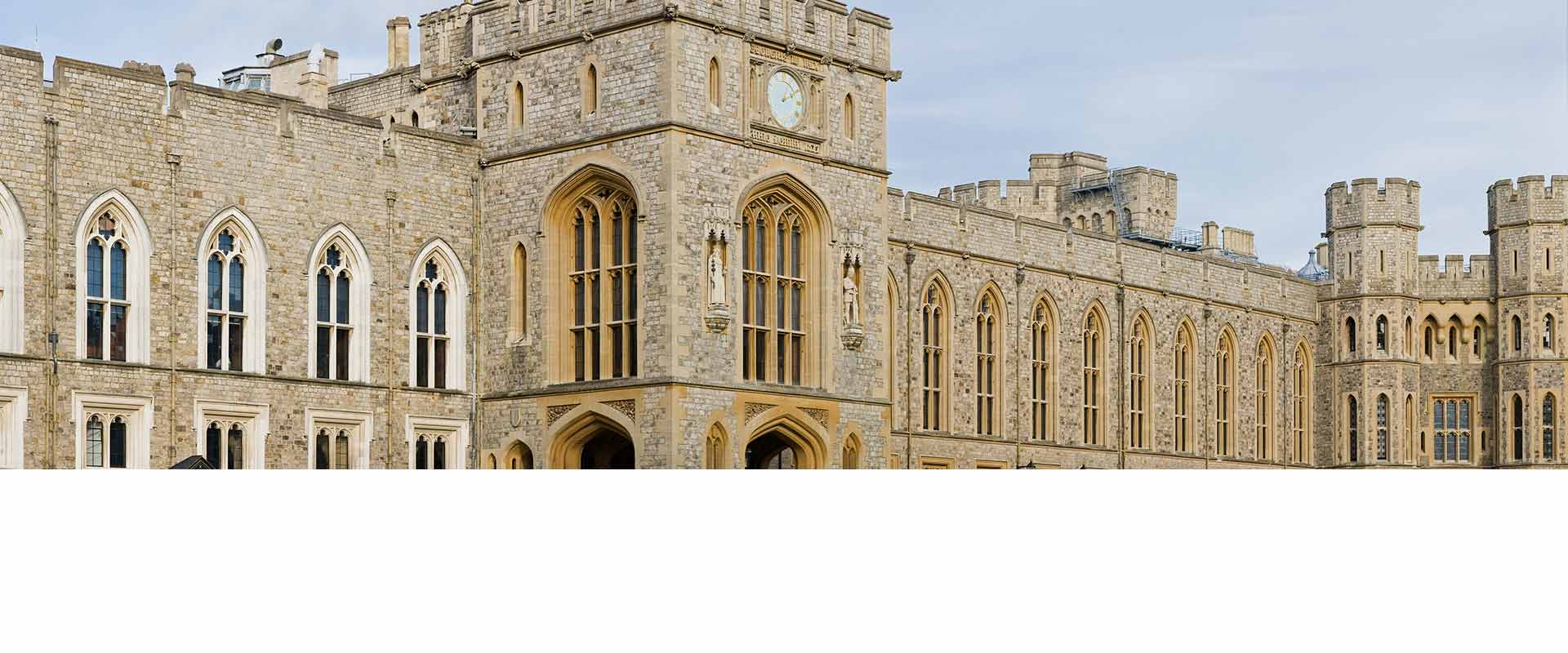
What To See
Windsor’s number one attraction is, of course, the Castle, and deservedly so. Some visitors don’t get much further than the Castle, but there’s enough in Windsor to fill a day’s sightseeing, and enough nearby to make a weekend or several days thoroughly worthwhile. Windsor’s excellent road and rail links make it a good place to stay.
Here are the highlights:
- Windsor Castle / Royalty – one of the main reasons to visit Windsor is to see the Castle and maybe even get a glimpse of royalty!
- Royal Windsor Information Centre at the Guildhall – a good place to start the day – maps, guides, booking, souvenir shop and a museum!
- Windsor town centre – cobbled streets, tea shops, shopping, restaurants
- River Thames – take a boat trip, feed the ducks, or just view the Castle (best views are from the Eton side)
- Eton – visit the famous College and the galleries and antique shops on the High Street
- Frogmore House – 17th century Royal property set within Windsor Castle’s Home Park
- Windsor Great Park – includes the Long Walk, Savill Garden and Virginia Water
Read This Windsor Blog with some advice on things to do for free in Windsor…
Around Windsor and further afield:
- Dorney Court – Tudor manor house built in 1440
- Runnymede – where the Magna Carta was signed in 1215 – also the site of the RAF War Memorial and the John F Kennedy Memorial
- Ascot Racecourse – Horse Racing and Royal Ascot Week takes place in June every year
- Cliveden – former home of Lady Astor, set in 376 acres on cliffs 200 feet above the Thames
- Henley-on-Thames – a beautiful town on the banks of the Thames not far from Windsor
- Oxford – fabulous architecture in this medieval city famous for its prestigious university
- London – the capital city of England is only 20 miles from Windsor – easy to get to by train
- Stone Henge – a little further afield (approx 70 miles from Windsor about 90 minutes by car)
The great and ancient stone circle of Stonehenge is unique; an exceptional survival from a prehistoric culture now lost to us. The monument evolved between the later Neolithic (c3,000BC) and the middle of the Bronze Age (c1,600 BC) and is aligned with the rising and setting of the sun at the solstices, but its exact purpose remains a mystery. An awe-inspiring place, visitors to Stonehenge can discover the history and legends which surround this unique stone circle with a complimentary audio tour available in 10 languages (subject to availability).






